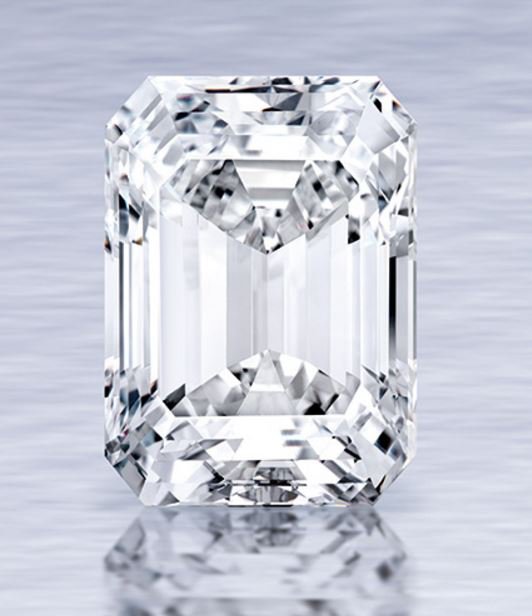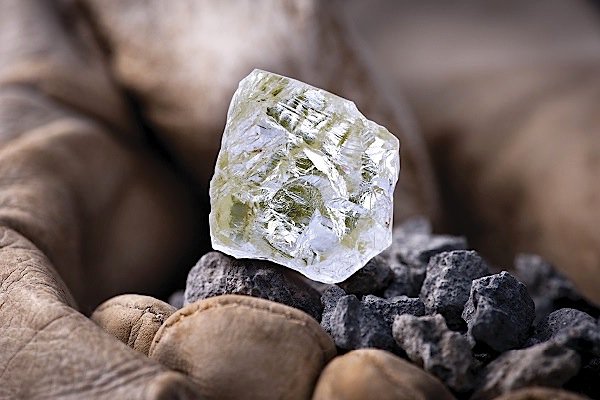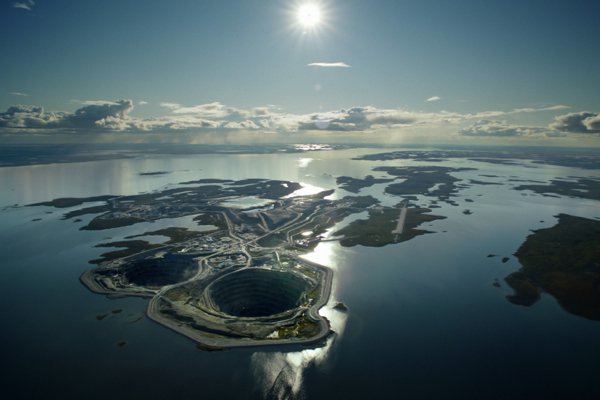Diamonds are forever, Monopolies aren’t
Published 04-DEC-2015 14:28 P.M.
|
5 minute read
Hey! Looks like you have stumbled on the section of our website where we have archived articles from our old business model.
In 2019 the original founding team returned to run Next Investors, we changed our business model to only write about stocks we carefully research and are invested in for the long term.
The below articles were written under our previous business model. We have kept these articles online here for your reference.
Our new mission is to build a high performing ASX micro cap investment portfolio and share our research, analysis and investment strategy with our readers.
Click Here to View Latest Articles
As every girl knows, diamonds can make the best of friends.
Beautiful, exotic and virtually indestructible, diamonds are used in jewelry as well as industrial uses more familiar to mining aficionados.
In the world of commerce and industry however, diamonds are causing angst and controversy. That’s just not what friends do.
Currently, the diamond industry produces a total of $19 billion worth of rough diamonds each year with an increasing amount allocated for jewellery, estimated to be worth $80 billion in global sales annually. Rough diamond sales grew by 12% last year topping $20 billion in value.
Over 65% of all rough diamonds are sourced from Africa with 30% made into gems for jewellery manufacture while the remaining 70% are sold for industrial applications including cutting, drilling, grinding and polishing for use in big industry.
When looking at the end-user, the United States represents the largest market (50%), followed by Japan (15%), Italy (5%), India (3%) and China (2%) with the remaining countries accounting for 23% combined.
Development of new diamond mines is now slowing and with three new mines beginning production last year, the prospect of additional supply has not brought down prices.
Russia is the largest diamond-producing country in the world, generating over 33 million carats in 2014. State-run Alrosa, the owner of Russia’s largest diamond mine (Udachnaya), is the world’s largest diamond miner, accounting for 99% of Russia’s output and 27% of global production.
De Beers and ALROSA remained the largest sellers of rough diamonds in 2014, accounting for 56% of global sales by value between them.
According to the ‘Diamond Insight Report 2015’, “the result of these new mines coming online will be a moderate increase in diamond supply in the next few years. But, towards the end of the decade, when many existing mines will begin to see declining outputs, overall supply is likely to plateau”.
Rough-diamond prices have fallen about 18% this year and are heading for a sixth straight quarterly decline, the longest streak since at least 2004, according to data from UK-based WWW International Diamond Consultants.
Jumbo diamonds at the ready
Individual rough diamonds worth in excess of $20 million after cutting and polishing, are occasionally found as part of mining operations.
An internally ‘flawless’ 100-carat emerald-cut diamond sold for $22 million at a Sotheby’s auction in April.

100-carat ‘Perfect Diamond’ in a classic Emerald-cut. Sold for $22.1 million at Sotheby’s
Very recently a 187 carat diamond was found by Rio Tinto at its Diavik mine in Canada’s Northwest Territories.

187-carat diamond found by Rio Tinto at Diavik mine in Canada’s Northwest Territories.

Aerial view of Rio Tinto’s Diavik mine in Canada
Meanwhile in Botswama, a 1,111 carat gem-quality diamond, second in size only to the Cullinan diamond cut into the British crown jewels, has been unearthed by Lucara Diamond Corp in Botswana.
The Type-IIa stone, just smaller than a tennis ball, is the largest diamond discovery for more than 100 years. It was recovered by machines at the south lobe of Lucara’s Karowe mine.
Lucara Diamond Corp.’s stock soared by 37% on the news last month, which was the company’s second significant find after a 813 carat stone (sixth largest ever) was unearthed earlier this year.
Coins have two sides, and so does the diamond industry
With so much media attention on recent jumbo rough diamonds, there are others who see the diamond industry in complete turmoil.
Martin Rapoport, head of The Rapaport Group, a diamond industry research network, says the diamond industry is undergoing fundamental structural change “as the rough diamond distribution system self-destructs amid collapsing rough prices. Frankly, it’s good news,” he adds.

Martin Rapoport, head of The Rapaport Group
In an editorial article published on Diamonds.net, titled ‘Rough Bubble Bust’ Mr. Rapoport vented his concern about the “manipulative” business practises of diamond industry juggernaut De Beers.
“De Beers’ refusal to lower rough prices is destroying the diamond trade, creating severe financial losses, illiquidity, supply shortages, and the loss of tens of thousands of jobs,” says Mr. Rapaport.
Mr.Rapoport claims rough diamonds have been “manipulated to artificially high, unsustainable levels” by De Beers. “De Beers must immediately inject liquidity into the diamond trade by reducing rough diamond prices 30–50 per cent. There is no justification for rough prices higher than polished diamond prices. Without a viable, profitable and sustainable diamond trade distributing their diamonds, De Beers diamond mines are worthless.”
In other research, William Wu from Berkeley University presented a topic titled, De Beers – Rulers of the Diamond Industry The Rise and Fall of a Monopoly Mr. Yu alleges De Beers have been surreptitiously raising prices through artificial supply shortages and other less tangible interference such as enforcing an opaque ‘sightholder’ system, collusion with business partners and antitrust practices.
Diamond Where Art Thou?
Despite operating under an non-competitive structure, designed and implemented by De Beers and its affiliated network of diamond producers, the diamond industry has flourished since the early 1900s when Ernest Oppenheimer set in motion several of the aforementioned practices that exist to this day.
In 1910, Henry Oppenheimer was quoted as saying “common sense tells us that the only way to increase the value of diamonds is to make them scarce, that is to reduce production,” according to Tom Zoellner’s book, The Heartless Stone: A Journey Through the World of Diamonds, Deceit, and Desire published in 2007.
The evolution of the diamond industry does beg the question – just how widespread and cheap diamonds could have been?
The answer, it seems, is that if the diamond market was left to its own devices; drilling as part of resource exploration would be vastly cheaper while millions of consumers could claim to have a diamond as a friend.
General Information Only
This material has been prepared by Jason Price. Jason Price is an authorised representative (AR 000296877) of 62 Consulting Pty Limited (ABN 88 664 809 303) (AFSL 548573) (62C), and a Director of S3 Consortium Pty Ltd (trading as StocksDigital).
This material is general advice only and is not an offer for the purchase or sale of any financial product or service. The material is not intended to provide you with personal financial or tax advice and does not take into account your personal objectives, financial situation or needs. Although we believe that the material is correct, no warranty of accuracy, reliability or completeness is given, except for liability under statute which cannot be excluded. Please note that past performance may not be indicative of future performance and that no guarantee of performance, the return of capital or a particular rate of return is given by 62C, Jason Price, StocksDigital, any of their related body corporates or any other person. To the maximum extent possible, 62C, Jason Price, StocksDigital, their related body corporates or any other person do not accept any liability for any statement in this material.
Conflicts of Interest Notice
S3 and its associated entities may hold investments in companies featured in its articles, including through being paid in the securities of the companies we provide commentary on. We disclose the securities held in relation to a particular company that we provide commentary on. Refer to our Disclosure Policy for information on our self-imposed trading blackouts, hold conditions and de-risking (sell conditions) which seek to mitigate against any potential conflicts of interest.
Publication Notice and Disclaimer
The information contained in this article is current as at the publication date. At the time of publishing, the information contained in this article is based on sources which are available in the public domain that we consider to be reliable, and our own analysis of those sources. The views of the author may not reflect the views of the AFSL holder. Any decision by you to purchase securities in the companies featured in this article should be done so after you have sought your own independent professional advice regarding this information and made your own inquiries as to the validity of any information in this article.
Any forward-looking statements contained in this article are not guarantees or predictions of future performance, and involve known and unknown risks, uncertainties and other factors, many of which are beyond our control, and which may cause actual results or performance of companies featured to differ materially from those expressed in the statements contained in this article. S3 cannot and does not give any assurance that the results or performance expressed or implied by any forward-looking statements contained in this article will actually occur and readers are cautioned not to put undue reliance on forward-looking statements.
This article may include references to our past investing performance. Past performance is not a reliable indicator of our future investing performance.
